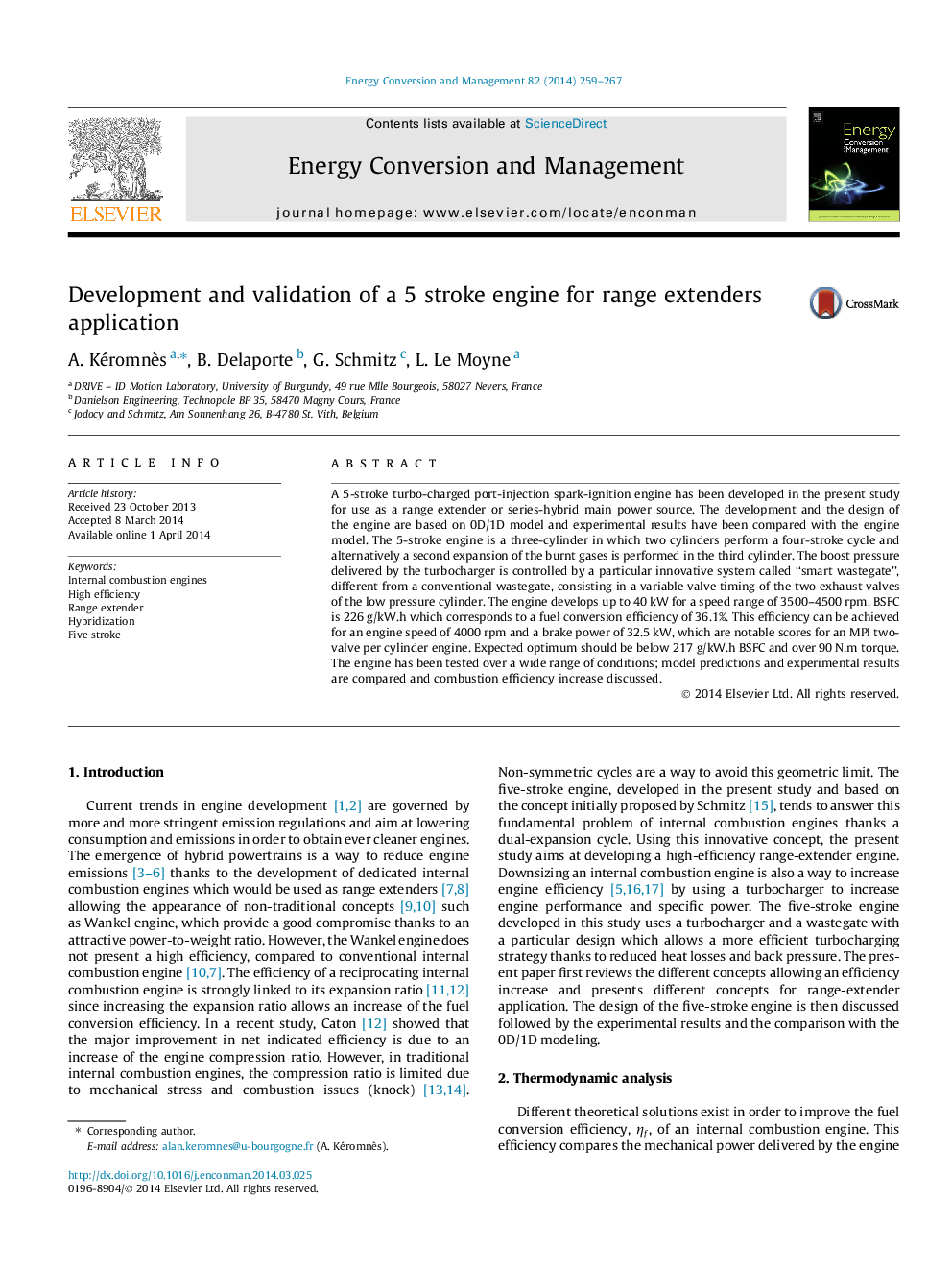| Article ID | Journal | Published Year | Pages | File Type |
|---|---|---|---|---|
| 7164924 | Energy Conversion and Management | 2014 | 9 Pages |
Abstract
A 5-stroke turbo-charged port-injection spark-ignition engine has been developed in the present study for use as a range extender or series-hybrid main power source. The development and the design of the engine are based on 0D/1D model and experimental results have been compared with the engine model. The 5-stroke engine is a three-cylinder in which two cylinders perform a four-stroke cycle and alternatively a second expansion of the burnt gases is performed in the third cylinder. The boost pressure delivered by the turbocharger is controlled by a particular innovative system called “smart wastegate”, different from a conventional wastegate, consisting in a variable valve timing of the two exhaust valves of the low pressure cylinder. The engine develops up to 40Â kW for a speed range of 3500-4500Â rpm. BSFC is 226Â g/kW.h which corresponds to a fuel conversion efficiency of 36.1%. This efficiency can be achieved for an engine speed of 4000Â rpm and a brake power of 32.5Â kW, which are notable scores for an MPI two-valve per cylinder engine. Expected optimum should be below 217Â g/kW.h BSFC and over 90Â N.m torque. The engine has been tested over a wide range of conditions; model predictions and experimental results are compared and combustion efficiency increase discussed.
Related Topics
Physical Sciences and Engineering
Energy
Energy (General)
Authors
A. Kéromnès, B. Delaporte, G. Schmitz, L. Le Moyne,
